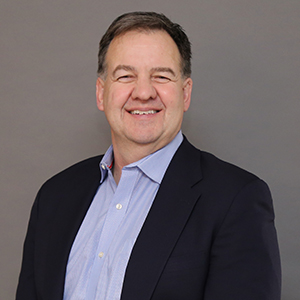Using engineering to decipher the impact of chemical exposure
Professor Kurt Pennell is bridging the gap between environmental engineering and public health.
 Kurt Pennell, 250th Anniversary Professor of Engineering, is passionate about his research. His goal? To clean up the environment and protect human health. Pennell's work on environmental toxicology and soil and groundwater remediation explores the intersection between toxicologists, engineers, and chemists, among others, to address long-standing environmental questions and problems concerning public health.
Kurt Pennell, 250th Anniversary Professor of Engineering, is passionate about his research. His goal? To clean up the environment and protect human health. Pennell's work on environmental toxicology and soil and groundwater remediation explores the intersection between toxicologists, engineers, and chemists, among others, to address long-standing environmental questions and problems concerning public health.
Brown's new Engineering Research Center and the excitement that exists at the interface of environmental engineering, toxicology, biomedical engineering, and public health drew Pennell to College Hill as he had approached the end of his term as chair of civil and environmental engineering at Tufts University. “I went to Tufts to help build the program, and to play an administrative leadership role,” he said. “Having done that, now I want to be in the lab. I want to do the best research I can do for the remainder of my career.”
He has found that at Brown. The freedom to design his own state-of-the-art lab, the ability to bring in cutting-edge equipment, and the opportunity to work alongside rising faculty—like School of Public Health Assistant Professor of Epidemiology Joseph Braun (who studies early life chemical exposures in pregnant women, infants, and children) and Assistant Professor of Pathology and Laboratory Medicine Jessica Plavicki (whose lab assesses the impact of chemical exposures and genetic mutations on cerebral vascular development and brain health)—as well as his chemical and environmental engineering peers, are shaping his research program here. Pennell also adds a dimension to Brown’s Superfund Research Program, which focuses on complex environmental contaminant issues in Rhode Island, by linking the work of several Rhode Island organizations through his study of environmental toxicants and nanomaterials. “What I do in the lab both complements and adds to the work that was already being done here.”
The longer term goal is to advance our understanding of and ability to mitigate environmental exposures, with the aspiration of reducing human disease and protecting our environment for future generations.
Pennell is widely regarded as an international expert in contaminated site remediation technology, and in the use of mass spectrometry to measure exogenous chemicals in blood and other biological samples that provide information on the human exposome—the measure of all the exposures of an individual in a lifetime.
Contaminated soil and groundwater site managers rely on Pennell's expertise for both thermal and bioremediation remedies. Pennell was one of several authors serving on the Committee of Future Options for Management in the Nation's Subsurface Remediation Effort that recently published “Alternatives for Managing the Nation's Complex Contaminated Groundwater Sites.” The report estimates that at least 126,000 sites across the United States still have contaminated groundwater, and their closure is expected to cost from $110 billion to $127 billion.
 Pennell also investigates diseases that harbor a strong indication of being caused by environmental factors. Currently, he is looking at the fate and toxicity of PFAS (Per- and Polyfluoroalkyl Substances)—man-made materials found in everyday items including food packaging, nonstick products and stain repellents. These chemicals can persist in the environment for long periods of time, leading to adverse health outcomes. Pennell’s curiosity about cumulative toxicant exposures, or “body burden,” began with studies of Parkinson’s disease, but have evolved to include the study of metabolomics. He is particularly interested in how exposure to environmental contaminants alter an individual’s metabolic profile and how these changes might contribute to adverse health outcomes.
Pennell also investigates diseases that harbor a strong indication of being caused by environmental factors. Currently, he is looking at the fate and toxicity of PFAS (Per- and Polyfluoroalkyl Substances)—man-made materials found in everyday items including food packaging, nonstick products and stain repellents. These chemicals can persist in the environment for long periods of time, leading to adverse health outcomes. Pennell’s curiosity about cumulative toxicant exposures, or “body burden,” began with studies of Parkinson’s disease, but have evolved to include the study of metabolomics. He is particularly interested in how exposure to environmental contaminants alter an individual’s metabolic profile and how these changes might contribute to adverse health outcomes.
The equipment in his new lab, including high-resolution mass spectrometers, help him measure endogenous chemical and metabolites in tissue and blood samples, breaking down more than 25,000 signals to 2,000 chemical features.
“My immediate goal at Brown is to create a high-resolution mass spectrometry facility that will support multi-disciplinary research and educational opportunities at the intersection of human health and the environment,” Pennell said. “The longer term goal is to advance our understanding of and ability to mitigate environmental exposures, with the aspiration of reducing human disease and protecting our environment for future generations.”